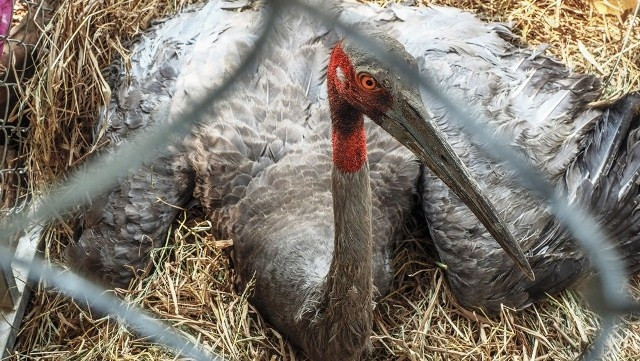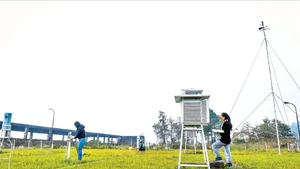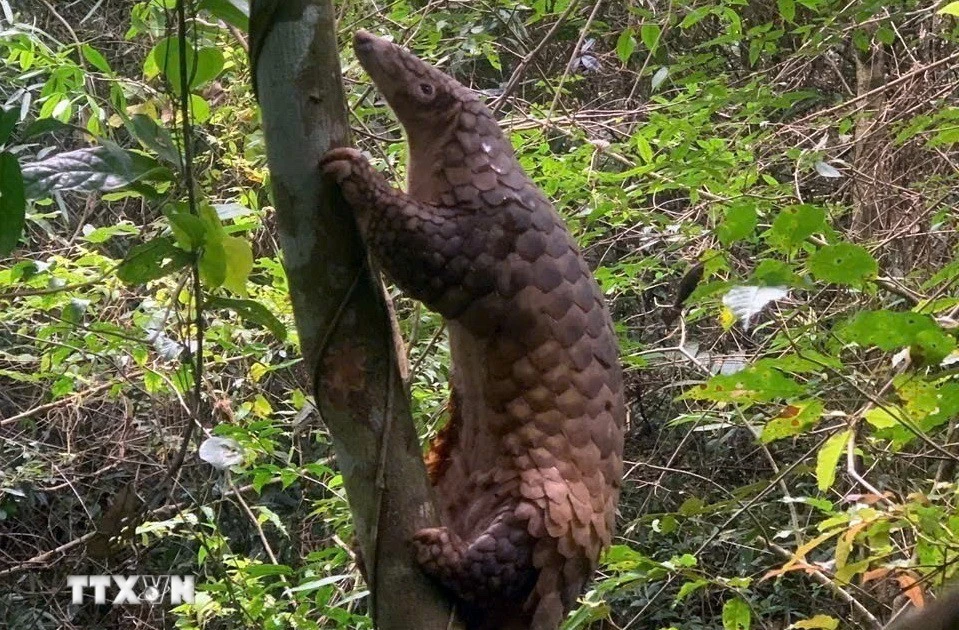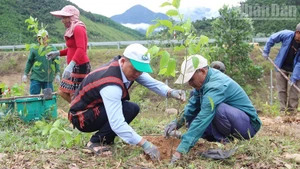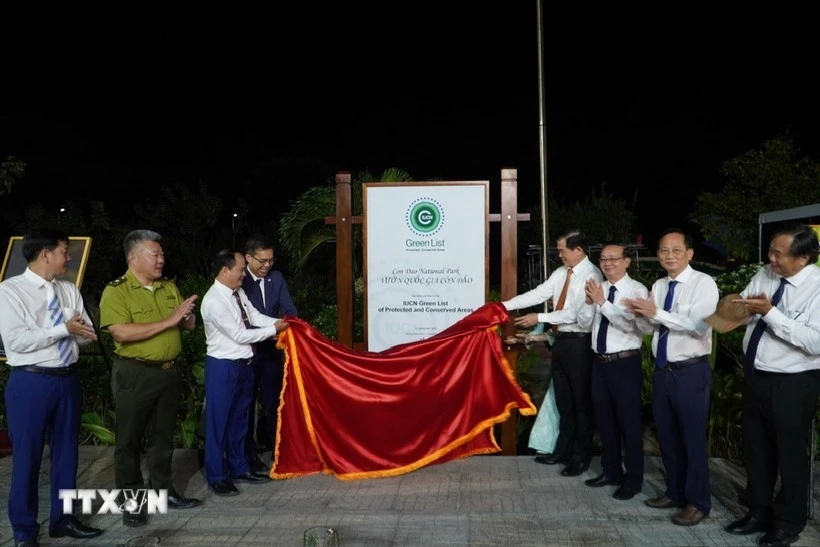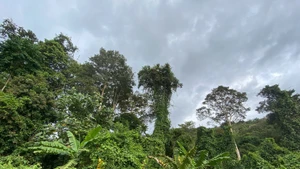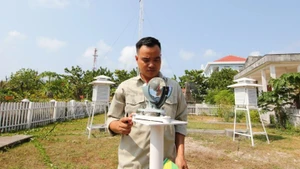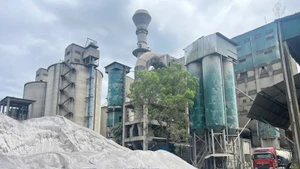Deputy Director of Centre for Conservation and Development at Tram Chim National Park, Doan Van Nhanh, told Nhan Dan Online reporters that a local found the weak crane accompanied by a female bird but he was too weak to fly. Local people gathered to catch him and reported it to the Tram Chim National Park.
Staff at the park contacted veterinarians and international experts to assist them in saving the rare crane, which now stands on the brink of extinction.
"Normally, cranes should self-feed but for this individual, the centre’s staff had to feed it and offer constant care for him over the past six days. But at around 4 am Tuesday morning, they informed me that the crane had died," Nhanh said.

The crane treated at Tram Chim National Park’s conservation centre.
In 1998, a monitoring anklet was attached to the red-headed crane. He was around 25 years of age, the equivalent of a 70-year-old human.
The red-crowned cranes usually return to Tram Chim in the dry season, from January 15 to mid-May. Nhanh said that, at present, there are only about nine cranes in Tram Chim, including the male individual that has just died. This period is also witnessing the largest number of red-headed crane in the park.

The crane was weak and could feed itself.
The cranes receive special care from Tram Chim National Park. At the beginning of their arrival, the availability of food for the cranes is not adequate due to the unfavourable wet mudflats. Tram Chim Centre for Conservation and Development has sent staff to supply additional food at local mudflats for the omnivorous species, mainly fish, corn and rice, but their favourite food is the water chestnut.
Previously, water chestnuts in Tram Chim were plentiful, but due to climate change and erratic flood seasons, the water chestnut cultivation area has been reduced. The park is trying to restore its potency, as it is the favourite food of not only the cranes but also many other species in the Tram Chim ecosystem.

At present, there are only about nine cranes in Tram Chim, including the male individual that has just died.
Explaining the cause for the increasingly reduced number of cranes arriving in Tram Chim, Nhanh blamed reduced food resources, the shrinking crane habitat and human impact. "In the past, local people only cultivated a few crops a year on the rice fields around Tram Chim. If there was not enough food in the park, the cranes could feed themselves in the fields outside, but now locals cultivate up to three crops a year, thus shrinking the food source for cranes," he explained.
Regarding the body of the dead crane, the deputy director said that Tram Chim Park is planning to make it into a bio specimen to serve their conservation work, as well as displaying it to serve visitors to Tram Chim when there is no opportunity to see the cranes hovering.

A member of staff from the Tram Chim National Park takes care of the 25-year-old crane.

The crane was around 25 years of age, the equivalent of a 70-year-old human.
